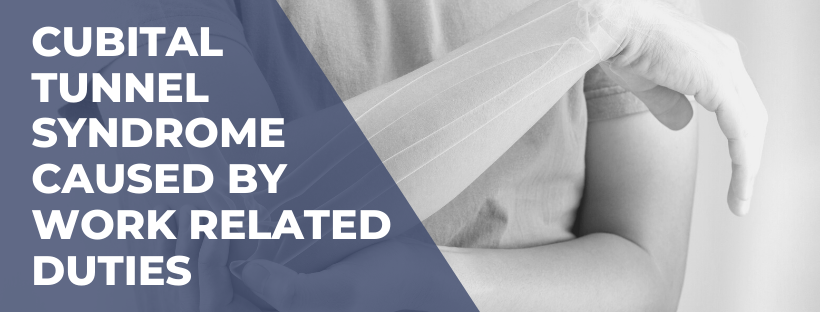What is cubital tunnel syndrome?
Cubital tunnel syndrome is a condition primarily caused by the constriction of the ulnar nerve. This is mainly associated with the increased exposure of the elbow on hard surfaces or from increased flexion and extension movements. As a result, the pain you feel is similar to what you’d experience if you hit the “funny bone” in your elbow. That “funny bone” is actually the ulnar nerve, a nerve that crosses the elbow that starts in the side of your neck and ends all the way down in your fingers.
It is the third most common work-related hand injury. Furthermore, it also accounts for 7% percent of workers’ compensation hand injury claims.
What Causes cubital tunnel syndrome?
Cubital tunnel syndrome usually happens when someone bends their elbows often. In workplace settings this occurs in people that do a lot of pulling, reaching, or lifting. It can also happen in office related work with people that tend to lean on their elbows a lot – such as those that do a lot of computer-related or administrative work.
Symptoms
Typically, cubital tunnel syndrome begins with numbness and/or tingling sensations on the inside of the forearm extending down into the hand. Even more symptoms include:
- Tenderness on the inside of the elbow where the nerve is close to the surface
- Difficulty telling the difference between sharp and dull objects touching the inside of the forearm
- Muscle wasting of the small muscles of the hand
- Difficulty gripping
- A hand deformity in which the fingers bend inward (known as ulnar claw hand)
Diagnosis
Physicians commonly use a physical exam or diagnostic tests such as an MRI or a nerve compression test to diagnose cubital tunnel syndrome. Other tests your doctor can suggest for diagnosis:
- Nerve conduction test: Tests how fast signals travel down a nerve to identify compression or constriction of the nerve
- EMG (electromyogram): Tests ulnar nerve and forearm muscle function
- X-Ray: Imaging done around your elbow to see if you have arthritis or bone spurs
Treatment of cubital tunnel syndrome
There are a variety of treatment options. If one’s symptoms do not improve, the physician may recommend surgery to release the pressure on the ulnar nerve where it passes through the cubital tunnel. Even more cubital tunnel treatment options include:
- Resting
- Stopping activity that aggravates the condition
- Using an elbow pad to protect against irritation that occurs from the elbow resting on hard surfaces
- Anti-inflammatory medication
- Wearing a plastic arm splint to bed (to limit movement & reduce irritation)
- Steroid injections
- Range of motion exercises
Cubital Tunnel Workers Comp Settlement with the Clardy Law Firm
If you suffer from cubital tunnel syndrome due to your job duties, please contact us. Our attorneys will make sure you receive the cubital tunnel workers comp settlement benefits you deserve to help cover the costs of imaging and treatment.





